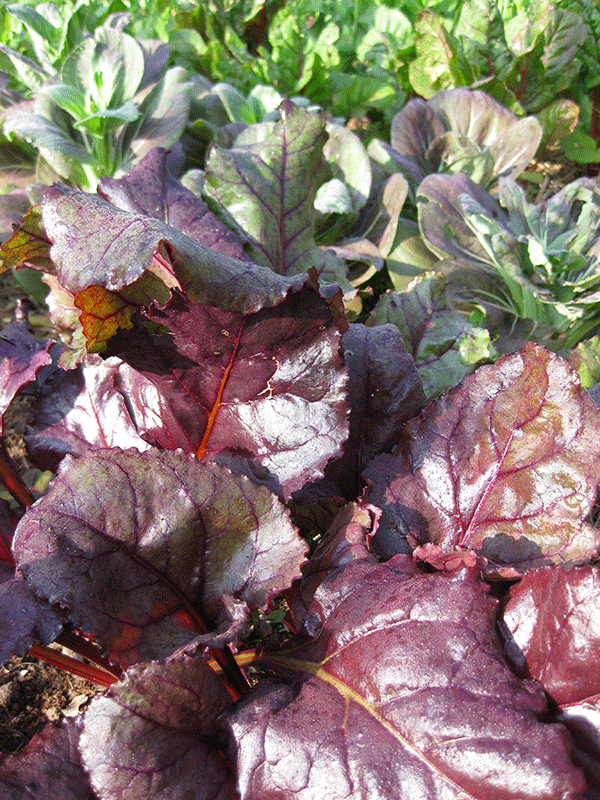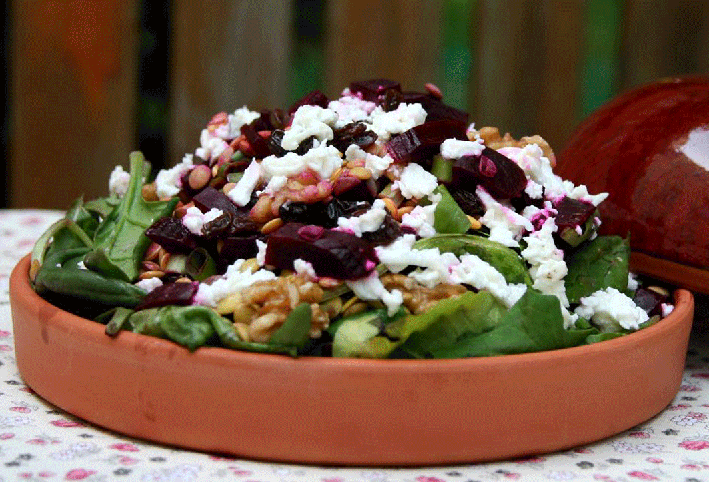The Beet goes on
Remember the soggy sandwich made of white bread, coloured by mum’s tinned beetroot, sitting in plastic wrap at the bottom of your lunchbox? That lunch box ‘treat’ almost succeeded in putting me off beetroot for life… however I’ve re-established my relationship with beetroot over the past few years, knowing that fresh is best and trying a succession of really tasty recipes that make the beet shine.
Beetroot is also now top of my list as one of the most versatile vegetables to grow. Every part of the beet can be eaten, it comes in a range of colours and shapes, can be served steamed, baked or raw and drunk as a juice.
Grow it as a sprout, microgreen or to full size; it’s best sown from spring to autumn, in mild areas all year round. Beetroot is a heavy feeder, so I like to prepare the soil by adding compost or organic fertiliser – the pH should be neutral to slightly alkaline. I sow directly where they are to grow. Beets like a moist, fertile, well-drained soil and plenty of sun. I’ve had times when the soil has dried out and been a bit lazy with the watering which has led to cracking and forking. So keep up the water! When they have germinated, I thin out, as each seed yields multiple plants which can lead to a bumper crop.
Maturity is between 8 and 10 weeks from planting. Picking the beets small and young gives me sweet and tender roots as the older ones become tough and fibrous. I find beetroot is not generally bothered by pests although saying that, the leaves can occasionally be attacked by grubs or chewing insects (which I ignore).
Beetroot has a delicate, sweet but earthy flavour and goes well with strong-flavoured or salty accompaniments: you can choose from beetroots that are dark red with a pink-ringed interior, or traditional Italian gourmet beets with attractive rosy pink skin outside and striking rings of red and white on the inside. If you prefer something a little different, use the wonderful golden yellow fleshed beets – they don’t bleed red! The roots are smooth and round and have a milder flavour than red beetroot.
Getting onto my favourite subject, food, I love cooked beetroot mixed with puy lentils, goats cheese and a dressing made of preserved lemon, lemon juice and olive oil. An even simpler dish is one of baked beetroot tossed with my favourite blue cheese and sliced apple. Try a beet today…
Tags: beetroot, cooking, microgreens, roots, salad, vegetables
Posted in Kitchen, Organic Gardening







Older Beetroots when grown organically are as tender as … maybe a tad tougher and richer in flavour than the baby Beets but just as good. Cooked hot or cold; juiced are favourites with glut of Cukes, Ginger, Lemon and other greens to taste.
Good article, thank you. Fortunately I had eaten roasted beetroot BEFORE ever eating the tinned stuff. Shudder, it took a fair few tries before I could eat that stuff.
Have you grown/eaten the white or golden ones? I’ve only read about them. Me, I just can’t go past the gorgeous colour of the traditional magenta ones.
Looks like a fantastic salad! At the end of the season, I like to turn the older, woodier beets into a great relish – Ive got the recipe and instructions over on my blog, check it out! http://bit.ly/1j1h4zV